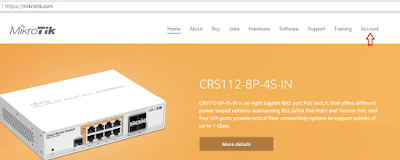


Yandex reported attacks beginning Aug(over 5 million requests per second) with a massive attack on 5 September 2021 reaching almost 22 million RPS (requests per second).

The net was named Mēris (or Meris) by Qrator. īeginning in June 2021, a botnet composed of unprotected Mikrotik devices created huge volumes of application-layer traffic using HTTP pipelining, resulting in DDOS. RouterOS through 6.42 allows unauthenticated remote attackers to read arbitrary files and remote authenticated attackers to write arbitrary files due to a directory traversal vulnerability in the WinBox interface.On, Cisco Talos Intelligence Group reported that some MikroTik devices were found vulnerable to the VPNFilter malware.Also, a return to PC add-in boards with the CCR2004-1G-2XS-PCIe. 2022 - Release of CCR 2000-series using ARM64-architecture CPUs and featuring 100GbE capability in the CCR2216.Tilera-base CCRs would eventually be released with up to 72-cores at 1GHz. 2012 - Release of Cloud Core Router (CCR) 1000-series, using Tilera's TILE-Gx many-core CPUs.Original RouterBoard was based on the Geode CPU, but later used MIPS. 2003 - Release of RouterBoard 200, a single-board router platform, and RouterBOARD 220 with the SBC integrated into an enclosure with a 2.4 GHz wireless antenna powered by PoE.2002 - Release of RouterBoard series PCI add-in boards to be used with MikroTik x86-based PCs running RouterOS.These early SBCs could be expanded and/or used as components of other systems, but as time passed, this RouterBoard/RouterOS platform would develop into a full line network equipment. In 2002, MikroTik began producing their own networking-focused low-power single-board computers, branded RouterBoard, that ran RouterOS. The earliest versions of RouterOS were based on Linux 2.2. MikroTik was founded in 1996 by John Tully and Arnis Riekstiņš in Riga, Latvia, developing networking software for x86 PC hardware that would develop into a product called RouterOS.


 0 kommentar(er)
0 kommentar(er)
